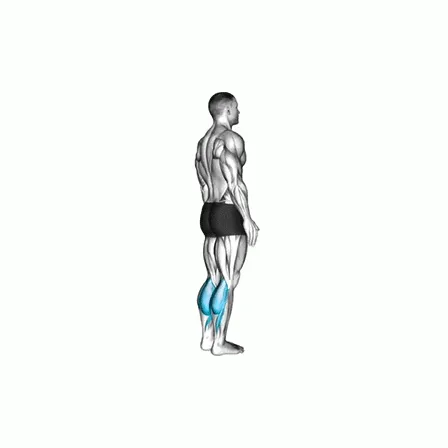Glute Bridge Variations for Home Fitness
Glute Bridge Exercise Instructions
-
Lie Flat on Your Back
- Lie down on your back with your knees bent and feet flat on the floor, hip-width apart.
- Place your arms at your sides, palms facing down. Your fingertips should just barely touch your heels when your arms are extended.
-
Engage Your Core and Glutes
- Tighten your core and squeeze your glutes before lifting your hips off the floor.
-
Lift Your Hips
- Press through your heels and lift your hips towards the ceiling. Raise your hips until your body forms a straight line from your shoulders to your knees.
- Keep your shoulders, upper back, and arms on the floor.
-
Squeeze at the Top
- When your hips are fully extended at the top of the movement, squeeze your glutes for a moment to maximize muscle activation.
-
Lower Your Hips Slowly
- Lower your hips back down slowly and with control, stopping just before your butt touches the floor to maintain tension in your glutes.
-
Repeat
- Perform the desired number of repetitions, maintaining controlled movements throughout the exercise.
Glute Bridge Exercise Tips
-
Engage Your Core
- Keep your core muscles engaged throughout the movement to protect your lower back and maintain proper alignment.
-
Press Through Your Heels
- Focus on pressing through your heels rather than your toes to activate the glutes more effectively. You should be able to lift your toes slightly off the ground if needed.
-
Squeeze Your Glutes at the Top
- At the peak of the bridge, give your glutes an extra squeeze for 1-2 seconds before lowering back down. This ensures maximum muscle engagement.
-
Keep Your Hips Level
- Avoid letting one hip dip lower than the other as you lift. Focus on raising your hips evenly for proper form.
-
Avoid Arching Your Back
- Don’t overextend your back at the top of the movement. Your body should form a straight line from your shoulders to your knees, with no hyperextension in the lower back.
-
Use Controlled Movements
- Perform both the lifting and lowering phases of the movement slowly and with control. Quick, jerky movements reduce the effectiveness and can lead to injury.
-
Breathe Properly
- Inhale as you prepare to lift, and exhale as you press through your heels and raise your hips. Controlled breathing supports core stability.
-
Add Variations to Increase Intensity
- Single-Leg Glute Bridge: Lift one leg off the ground while performing the bridge to increase the challenge and target each glute individually.
- Weighted Glute Bridge: Place a dumbbell or barbell across your hips for added resistance.
- Elevated Glute Bridge: Rest your feet on an elevated surface (like a bench or step) to increase the range of motion and difficulty.
-
Modify for Comfort
- If you feel strain in your neck or shoulders, try placing a folded towel under your head for support.
- For more comfort, place a mat under your back and feet.
-
Start Slow and Progress
- If you're new to glute bridges, start with bodyweight versions. As you gain strength and confidence, add weight or progress to advanced variations like hip thrusts.














